Here are a Few Safety Tips For Homeowners During the Holiday Season
‘Tis the season— for some tips on holiday safety!
It’s hard to deny that November and December are the most anticipated months of the year. Between gift-giving, food, and family time, what’s not to love?
Oh, that’s right— the stress.
It wouldn’t be the holidays if something didn’t go awry, right? One year it’s the hassle of hanging up the Christmas lights, and the next, it’s burning the dinner turkey.
So, to make your holiday season more enjoyable, we’ve laid out advice for anything that could possibly go wrong.
From wrapping paper recycling to fire safety at home, here are tips on how to have a safe, fun, and merry holiday season!
RELATED: 8 HOLIDAY LIGHTING SAFETY TIPS
5 Tips for Holiday Safety
Now, we’re giving these tips in the spirit of keeping your family safe. But they’ll also ensure that your home is always in pristine condition.
Something that will bode in your favor should you decide to sell.
As home inspectors, we can’t tell you how many of these simple, routine steps can fall through the cracks. And if you go year after year without checking on your home’s safety, you’re bound to have a few costly structural issues down the road.
With it being the end of the year, you probably had some of these on your To-Do list anyway. So, let’s go through this home maintenance checklist to make sure everything is in working order for the holidays this year.
RELATED: 5 WAYS TO REDUCE YOUR ELECTRIC BILL IN FLORIDA
5. Christmas Tree Safety
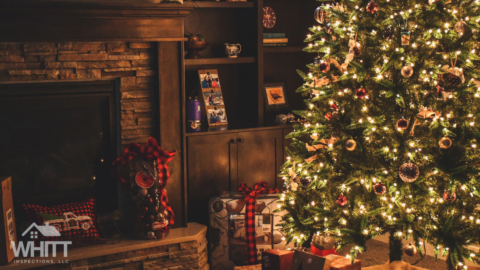
Would you believe that there are about 160 home fires started every year from Christmas trees?
Yep, the National Fire Protection Association estimates that between 2014-2018, these fire accidents caused 14 injuries, 2 deaths, and over $10 million in property damages.
Most of these fires started in December or January as natural Christmas trees start to dry up. What’s even scarier is the fact that the peak time for when these fires start is between 6 p.m. and midnight— when most of us are asleep.
So how can you prevent this Christmas disaster? Because decorative lights cause 17% of these fires, you should start by making sure your Christmas lights don’t have any frayed wires or broken bulbs. If they do, it’s time to replace them.
Cords, plugs, and wiring are the other contributing factors. So it’s worth investigating their state when you install them, a nd the condition of your outlets and other home fixtures such as nearby lamps.
And as always, unplug your tree before going to bed!
Here are some more valuable tree tips for holiday safety from the NFPA.
4. Be Careful in the Kitchen
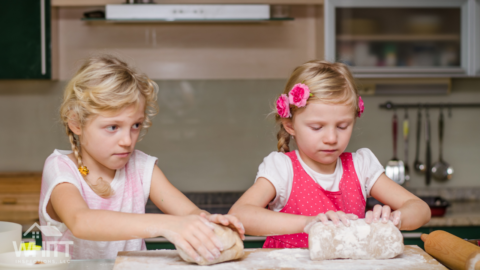
You may know your way around the kitchen, but we all know how chaotic it can be when cooking dinner for extended family.
With so much going on, even the most expertly choreographed chefs are prone to slip up. To eliminate any mishaps, here are a few things to be mindful of before prepping your extravagant dinner:
-
- Thoroughly clean your kitchen surfaces: This diminishes grease buildup and frees up counter space.
- Be mindful of clothing: Roll up your sleeves while cooking on the oven or over the grill. Also, be aware of loose towels or oven mitts. Try only to have 1 or 2 handy while you’re working.
- Know your oven safety: Set timers for everything so nothing gets burned, keep kids and pets out of the kitchen, and try to clean as you go.
RELATED: IS YOUR HOME FIRE SAFE?
3. Fire Safety at Home
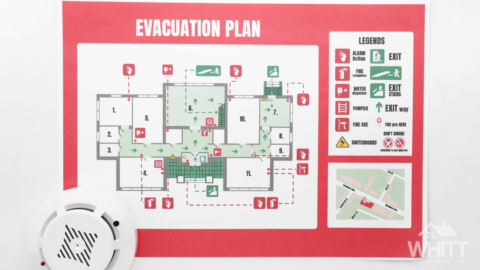
Speaking of house fires, it’s about time to check your smoke and carbon monoxide detector alarms.
Smoke alarm batteries typically need to be changed every 6-12 months, unless their sealed units. You shouldn’t have to replace the alarm entirely unless it’s over 10 years old.
Here’s how to test them to make sure they’re working properly:
- Find the button on your smoke alarm
- Press and hold down the button until you hear the siren
- Replace the alarm’s battery if the siren sounds weak, low, or distorted
CO detectors can be plug-ins for your wall, or they’re embedded into your home’s electrical system. The latter should have a battery backup which you need to replace once or twice a year.
Here’s how to test your CO detector to make sure it’s working:
- Find the “test” button
- Press and hold down the button until you hear 2-4 beeps
- Replace the alarm’s batteries you don’t hear the beeps
Your kids and guests should know your fire escape plan. Your escape plan should list at least two exit options, the location of your fire extinguisher and where to meet outside the home (the end of your driveway is always a safe place). You can even get cool printable escape plans to place around your house for everyone to see!
In case of an emergency, you should have two primary exits, so make sure nothing is blocking them (be mindful of where you place your holiday decorations). If you have guests who smoke, it’s best to offer them a comfortable place to do this outside. Have ashtrays readily available, along with water to pour on the butts for optimal safety.
RELATED: WHY CARBON MONOXIDE DETECTORS ARE IMPORTANT
2. Time To Change Those Air Filters
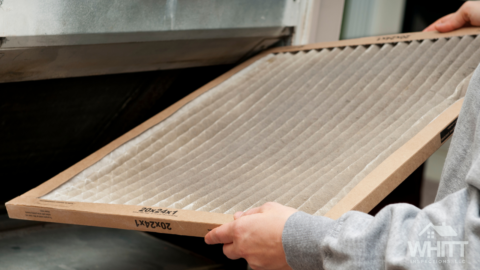
The type of air filter you have dictates how often you need to change it. If you have a disposable fiberglass air filter, you’ll want to change it every 30 days. For pleated filters, you can go as long as three months before having to pop in a new one.
To air (pun intended) on the side of caution, we recommend checking up on the condition of your filter once a month. This is especially true for homeowners who have pets, allergies, and larger homes.
So don’t forget to replace those filters so that your holiday guests can take a breath of fresh air. Literally. A new air filter can help eliminate pesticides, cleaning supplies, pollen, dust, and dander!
RELATED: HOW TO CHANGE OR REPLACE A LIGHT FIXTURE IN YOUR HOME
1. Recycling Wrapping Paper

Whatever you do, do not burn your wrapping paper!
Throwing bows and ribbons into the fireplace might be a holiday tradition for your family, but it’s an ongoing problem in the U.S. The color pigments in your gift wrap can cause a chemical reaction when they burn, creating an insidious (and hazardous) flame.
So remember to recycle that wrapping paper this year, not rekindle it.
If you genuinely want to maintain an environment-friendly holiday, try to avoid using these items in your gift wrapping:
- Bows: These aren’t recyclable, and they cause a mess at paper mills. However, you can recycle them by saving all the bows in a bin to reuse them next year!
- Ribbon: You know how frustrating it is when a ribbon gets wrapped up in your vacuum? Imagine that happening to the machines at your local waste facility because of all the Christmas ribbon.
- Glittery or metallic wrapping paper: Recycling wrapping paper is a great idea— in theory. But not all wrapping materials are created equal in the eyes of the sustainable community. According to this blog, “Wrapping paper cannot be recycled if it contains sparkles, glitter, sequins, foil, artificial texture, sticky gift labels, or plastic. Nor can it be recycled if it has been laminated or has loads of leftover tape, ribbons, or bows still attached.”
Do you have any tips for holiday safety? Let us know in the comments!

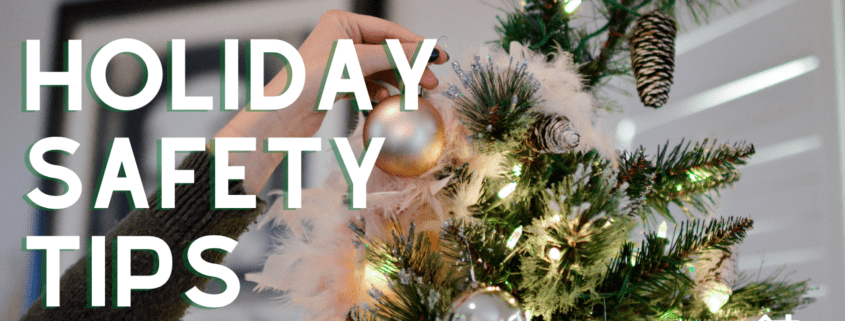





Leave a Reply
Want to join the discussion?Feel free to contribute!